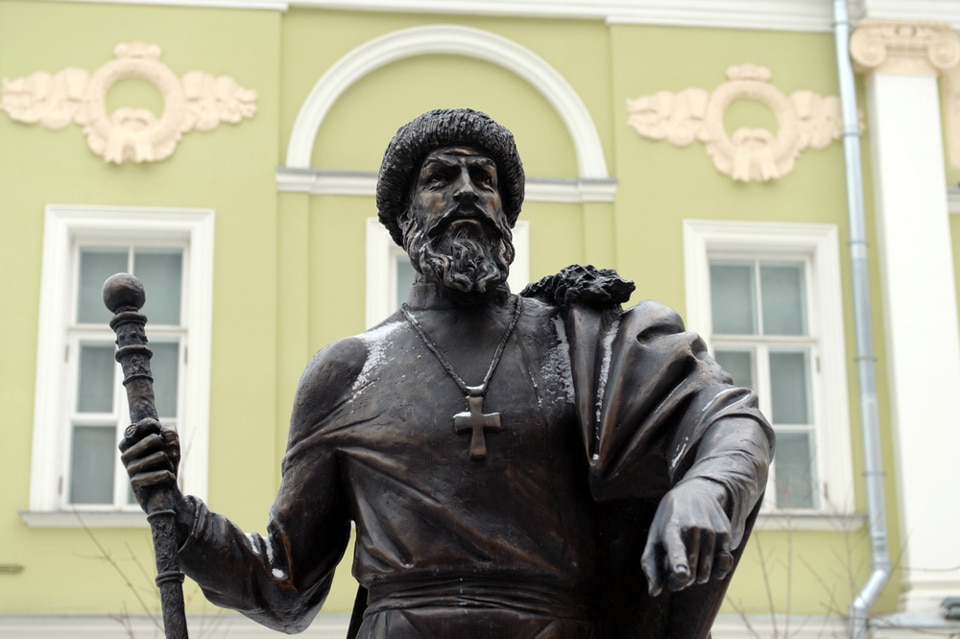Exploring the Legacies of some Remarkable Monarchs Who Ascended to Power Before Turning 20

Embarking on a historical journey, we delve into the intriguing narratives of monarchs who ascended to power before reaching the tender age of 20. In an era distant from our own, where life expectancies were notably shorter, the decision to enthrone youthful leaders wasn’t merely a matter of novelty but often a pragmatic maneuver undertaken by royal families and courts to ensure the continuity of dynasties.
Curated from diverse historical sources such as Britannica, History, The European Middle Ages, and About History, the compilation by the CEOWORLD magazine unveils a tapestry of youthful reigns, where symbolism often preceded substantive governance. The nuances of these early ascensions reveal a complex interplay of power dynamics, with regents and courts orchestrating crucial decisions until these monarchs matured into their roles. Yet, the vulnerability of youth also laid the groundwork for ambitious advisors to shape the destiny of entire nations, exemplified poignantly in the reigns of King Charles II of Spain and England’s Henry VI.
These reigns, although initiated by young monarchs, rippled across the pages of history, leaving indelible imprints on their respective nations. The demise of Pharaoh Ptolemy XIII in the midst of conflict with Julius Caesar’s legions marked a turning point in the fate of the Ptolemaic dynasty in Egypt. Similarly, the absence of an heir after King Charles II of Spain’s death plunged the nation into the War of Spanish Succession, signaling the onset of Spain’s imperial decline. Pu Yi’s four-year rule in China, commencing at the age of two, served as the final chapter in the extensive narrative of Chinese imperial rule, spanning over two millennia.
- Murad IV (Ottoman Empire):
Commencement Age: 20
Reign: 1632-1640
Known for his brutal rule, Murad IV’s governance witnessed severe penalties for tobacco and alcohol use, and the sack of Baghdad in 1638 resulted in the execution of thousands. - Pope Benedict IX (Papal States):
Commencement Age: 20
Reign: 1032-1044, 1045, 1047-1048
The tumultuous papacy of Benedict IX involved violence, immorality, and political intrigue, culminating in his sale of the papacy to his godfather. - Queen Christina (Sweden):
Commencement Age: 18
Reign: 1644-1654
Ascending to the throne at the tender age of six, Christina’s patronage of the arts and Sweden’s colonization efforts in North America emerged as significant features of her multifaceted rule before her voluntary abdication in 1654. - Alfonso XIII (Spain):
Commencement Age: 16
Reign: 1902-1931
Alfonso XIII’s tumultuous reign unfolded against a backdrop of political instability, military coups, and attempts on his life, ultimately culminating in his self-imposed exile from Spain in the face of an impending civil war. - Ivan the IV (Russia):
Commencement Age: 16
Reign: 1547-1584
Known as Ivan the Terrible, his ascension to the throne was marked by sweeping reforms, wars with Poland and Sweden, and a later period of terror against the nobility. - Mary, Queen of Scots (France, Scotland):
Commencement Age: 16
Reign: 1559-1567
Betrothed at the tender age of six, Mary became Queen consort of France, faced revolt in Scotland, and later endured 19 years of English imprisonment, culminating tragically in her execution. - Shapur II (Sasanian Empire):
Commencement Age: 16
Reign: 325-379
Shapur II’s ascension to the Sasanian emperorship in Persia unfolded under violent circumstances, marked by brutal campaigns against Arab tribes, wars with the Roman Empire, and territorial expansions. - Emperor Elagabalus (Roman Empire):
Commencement Age: 15
Reign: 218-222
Elagabalus’ unconventional reign in Rome, marked by religious changes and scandalous behavior, led to his eventual assassination by the praetorian guard in 222. - King Charles II (Spain):
Commencement Age: 14
Reign: 1665-1700
Plagued by physical disabilities, Charles II’s ineffectual rule confronted challenges from King Louis XIV of France, court intrigue, and issues of succession, ultimately leading to the tumultuous War of Spanish Succession. - Emperor Gordian III (Rome):
Commencement Age: 13
Reign: 238-244
After the deaths of co-emperors Gordian I and II, the 13-year-old Gordian III was thrust into the complexities of imperial governance, navigating the intricacies of rule until his untimely death. - King Baldwin IV (Jerusalem):
Commencement Age: 13
Reign: 1174-1185
Afflicted by leprosy, Baldwin IV’s reign was marked by continuous efforts to defend his kingdom against Saladin, ultimately leading to the collapse of the Kingdom of Jerusalem two years after his death. - Isabella II (Spain):
Commencement Age: 13
Reign: 1843-1868
Isabella II’s reign in Spain unfolded against a backdrop of political turmoil, challenged legitimacy, and unpopularity, culminating in her eventual abdication in 1870. - Pharaoh Ptolemy XIII (Egypt):
Commencement Age: 11
Reign: 51-47 B.C.
Ptolemy XIII’s rule in Egypt, marked by political intrigue, alliances, and conflicts with Julius Caesar, culminated tragically as he drowned in the Nile. - King Wladyslaw III (Poland, Hungary):
Commencement Age: 10
Reign: 1434-1444
Known for defending Eastern Europe against the Ottoman Empire, Wladyslaw III’s pursuit of territorial gains ultimately led to his demise in the Battle of Varna. - Pharaoh Tutankhamun (Egypt):
Commencement Age: 8-9
Reign: 1333-1323 B.C.
Tutankhamun, known colloquially as “King Tut,” became a global symbol after the discovery of his intact tomb, revealing not only the restoration of ancient Egyptian religious practices but also a rich array of artifacts reflecting the opulence of his reign. - King Edward VI (England):
Commencement Age: 9
Reign: 1547-1553
As a sickly child, Edward VI’s brief reign focused on religious reforms within the Church of England, showcasing a departure from previous monarchical norms. His untimely death at the age of 16 left an indelible mark on England’s religious trajectory. - King Henry VI (England):
Commencement Age: 8
Reign: 1429-1471
Weak-willed during the tumultuous Hundred Years’ War and the Wars of the Roses, Henry VI’s reign was marred by internal strife, complex royal dynamics, and a tragic end that saw his imprisonment and likely murder in the Tower of London. - Emperor Kaliman Asen I (Bulgarian Empire):
Commencement Age: 7
Reign: 1241-1246
Kaliman Asen I’s reign unfolded against the backdrop of Mongol invasions, internal decay, and the waning influence of the Bulgarian Empire. Some historical perspectives suggest that his reign was marred by declining power, culminating in speculation about his alleged poisoning. - Emperor Fulin (China):
Commencement Age: 5
Reign: 1643-1661
Fulin’s ascent to becoming the third emperor of China’s Qing Dynasty at the tender age of five marked a chapter in Chinese history overshadowed by regency and influence. During his reign, the empire faced challenges, and Fulin, albeit young, sought to address corruption, consolidate imperial power, and foster intellectual pursuits, particularly in science and astronomy. - King Oyo (Uganda – Tooro):
Commencement Age: 3
Reign: 1995-
In a striking juxtaposition to historical monarchs, the contemporary reign of King Oyo in Uganda’s Tooro kingdom commenced at the astonishingly young age of three. While symbolic in governance due to the country’s elected presidential system, King Oyo holds sway over a significant portion of Uganda’s population, embodying a modern continuation of traditional monarchy. - Emperor Pu Yi (China):
Commencement Age: 2
Reign: 1908-1912
Pu Yi’s story stands as the epilogue to more than two millennia of imperial rule in China. Ascending to the throne at the tender age of two, Pu Yi’s four-year reign bore witness to seismic shifts in China’s political landscape, from the end of imperial rule to the establishment of a republic. His subsequent journey, including capture by the Russians, imprisonment, and eventual pardon by Mao Zedong after conversion to communism, encapsulates the intricate tapestry of China’s historical transformation in the early 20th century.
Have you read?
Ranked: Most Environmentally Friendly Countries in the World, 2023.
Report: Countries with highest numbers of child marriage, 2023.
Ranked: These Are The Best Museums in the United States, 2023.
Ranked: These Are the Countries with the Highest Kidnapping Rates, in 2023.
Best High-Demand Products for Profitable Online Selling, 2023.
Bring the best of the CEOWORLD magazine's global journalism to audiences in the United States and around the world. - Add CEOWORLD magazine to your Google News feed.
Follow CEOWORLD magazine headlines on: Google News, LinkedIn, Twitter, and Facebook.
Copyright 2025 The CEOWORLD magazine. All rights reserved. This material (and any extract from it) must not be copied, redistributed or placed on any website, without CEOWORLD magazine' prior written consent. For media queries, please contact: info@ceoworld.biz








